Solar System: Things To Know This Week
Solar System: Things to Know This Week
Here are a few things you should know about our solar system this week:
1. Gearing Up for a Grand Finale

There’s just a year left until the Cassini mission begins its Grand Finale – the final phase of its mission, during which the spacecraft will dive repeatedly between the planet and the rings. To get ready, the Cassini team has launched an enhanced, mobile device-friendly version of the mission website. The site includes information about Cassini, Saturn, the moons and the rings – but it also tells the human stories behind one of the most ambitions expeditions of all time.
2.Caught in Transit

On Monday, May 9, the planet Mercury will cross directly in front of the sun, an event that hasn’t occurred since 2006 and won’t happen again until 2019. Find out how to watch HERE.
3. A Moon for Makemake

Our Hubble Space Telescope has spotted a small, dark moon orbiting Makemake (pronounced “MAH-kay MAH-kay). Make make is the second brightest icy dwarf planet – after Pluto – in the faraway Kuiper Belt.
4. The Age of the Aquarids

The Eta Aquarid meteor shower is the first of two showers that occur each year as a result of Earth passing through dust released by Halley’s Comet. This year, it should peak on the night of May 5/6. Get tips for watching HERE.
5. The Southern Lights of Saturn

On May 4, Cassini will reach periapse, the closest point to Saturn in the spacecraft’s orbit. At about this time, Cassini’s cameras will monitor Saturn’s south polar aurorae, and also image the bright limb of the planet to better understand its upper haze layers.
Want to learn more? Read our full list of the 10 things to know this week about the solar system HERE.
Make sure to follow us on Tumblr for your regular dose of space: http://nasa.tumblr.com
More Posts from Intergalacticnerd and Others


February 7, 1984 – Astronauts Bruce McCandless II and Robert L. Stewart make the first untethered spacewalk using the Manned Maneuvering Unit (MMU) during mission STS-41B of the Space Shuttle Challenger.
(NASA)
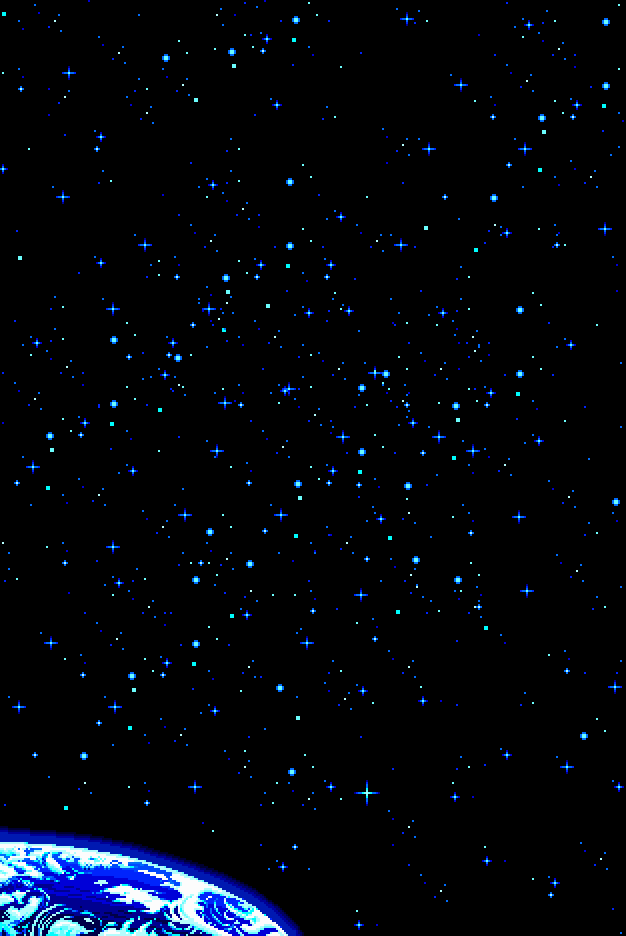




This is the coolest outer space animation ever. It shows the Crab Supernova explosion, happened in 1054, and its evolution into the remnant it is now - called the Crab Nebula. Basically a thousand years speeded up into less than a minute.
Modern understanding that the Crab Nebula was created by a supernova, an explosion of a massive supergiant star, dates to 1921 when Carl Otto Lampland announced he had seen changes in its structure. This eventually led to the conclusion that the creation of the Crab Nebula corresponds to the bright SN 1054 supernova recorded by Chinese astronomers in AD 1054. There is also a 13th-century Japanese reference to an appearance of a new or “guest” star in Meigetsuki. It was then so bright it was visible during the daytime for 23 days.
animation credit: ESA/Hubble (M. Kornmesser & L. L. Christensen)

For the first time, astronomers have observed bursts of visible light being released by a black hole as it swallows matter from nearby stars.
These flashes of light, which lasted between several minutes to a few hours, were seen coming from a black hole in the Cygnus constellation, located about 7,800 light-years away from Earth. Incredibly, some of the flashes were so bright, the team says amateur astronomers could see them with a modest 20-cm telescope.
“We find that activity in the vicinity of a black hole can be observed in optical light at low luminosity for the first time,” astronomer and lead researcher, Mariko Kimura from Kyoto University in Japan, told Charles Q. Choi at Space.com.
“These findings suggest that we can study physical phenomena that occur in the vicinity of the black hole using moderate optical telescopes without high-spec X-ray or gamma-ray telescopes.”
Continue Reading.
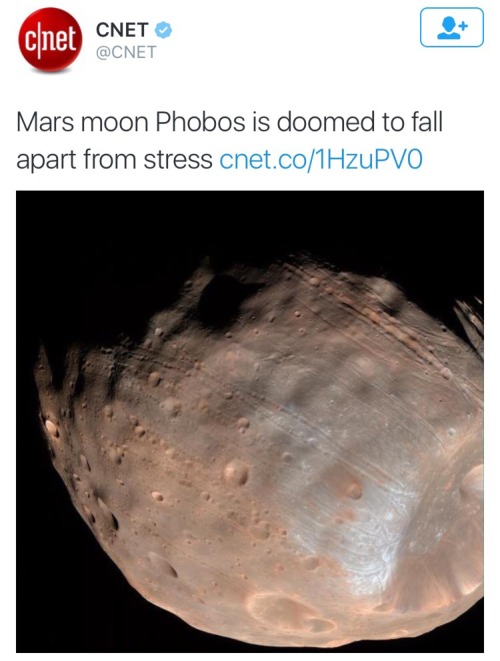
Wow me too

M7, Open Star Cluster
Elon Musk has released this video of today’s Falcon 9 landing attempt. The first stage of the JASON-3 mission’s Falcon 9 touched down on the surface of the Autonomous Spaceport Drone Ship around ten minutes after today’s 1:42pm EST launch.
However, according to Musk, landing strut #3 didn’t lock in to place properly, and vehicle toppled over. In this newly-released video, the Falcon 9 can be seen gently coming to land on the desk of the ship, falling on the improperly secured leg shortly thereafter.
Musk also said that preliminary data suggests ice build up from foggy launch conditions may have caused the strut to improperly secure upon deployment.
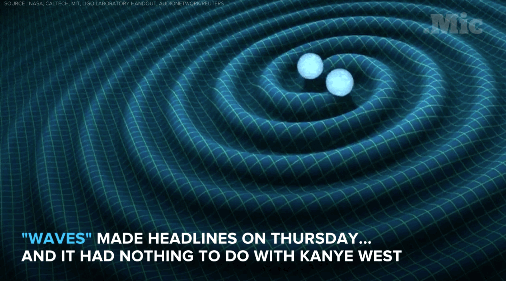

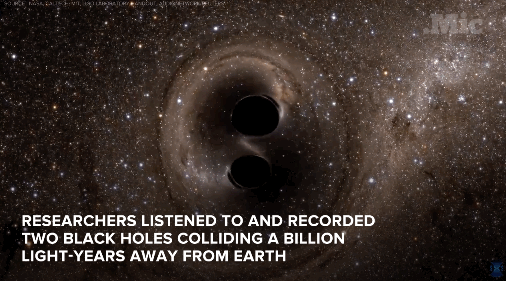


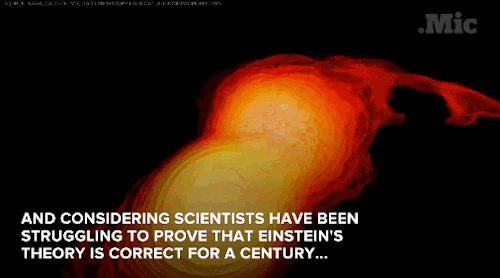

Gravitational waves are real — and that’s a huge f***ing deal!
A century ago, Albert Einstein theorized there was such a thing as a fabric of space and time — that the universe was malleable, and that large objects and events would cause it to bend.
He was right. From studying the signals emanating from the merging of two black holes — have separate masses equal to 36 and 29 suns — scientists with the Laser Interferometer Gravitational-Wave Observatory were able to observe gravitational waves. Their measurements matched expectations of what Einstein predicted in his General Theory of Relativity.
Follow @the-future-now

SN 1006 Supernova Remnant by NASA, ESA and Zolt Levay
-
 jose251998-blog liked this · 5 years ago
jose251998-blog liked this · 5 years ago -
 harajukumoses liked this · 6 years ago
harajukumoses liked this · 6 years ago -
 cosmic-quark liked this · 8 years ago
cosmic-quark liked this · 8 years ago -
 twiggietruth liked this · 8 years ago
twiggietruth liked this · 8 years ago -
 kuiperkat liked this · 8 years ago
kuiperkat liked this · 8 years ago -
 minogiizhik reblogged this · 8 years ago
minogiizhik reblogged this · 8 years ago -
 iconikuh reblogged this · 8 years ago
iconikuh reblogged this · 8 years ago -
 alienslob liked this · 8 years ago
alienslob liked this · 8 years ago -
 fleurdebach5-blog liked this · 8 years ago
fleurdebach5-blog liked this · 8 years ago -
 mynameiswolke reblogged this · 8 years ago
mynameiswolke reblogged this · 8 years ago -
 gudetama-fion-blog liked this · 8 years ago
gudetama-fion-blog liked this · 8 years ago -
 timeladythewarden reblogged this · 8 years ago
timeladythewarden reblogged this · 8 years ago -
 agentofnightvale-blog reblogged this · 8 years ago
agentofnightvale-blog reblogged this · 8 years ago -
 slutforthe-stars reblogged this · 8 years ago
slutforthe-stars reblogged this · 8 years ago -
 slutforthe-stars liked this · 8 years ago
slutforthe-stars liked this · 8 years ago -
 tobyvansten reblogged this · 8 years ago
tobyvansten reblogged this · 8 years ago -
 alpacasarethegreenestanimals reblogged this · 8 years ago
alpacasarethegreenestanimals reblogged this · 8 years ago -
 alpacasarethegreenestanimals liked this · 8 years ago
alpacasarethegreenestanimals liked this · 8 years ago -
 omega2luv liked this · 8 years ago
omega2luv liked this · 8 years ago -
 naktine reblogged this · 9 years ago
naktine reblogged this · 9 years ago -
 nidesboy-blog liked this · 9 years ago
nidesboy-blog liked this · 9 years ago -
 lachaim liked this · 9 years ago
lachaim liked this · 9 years ago -
 jaegerszn reblogged this · 9 years ago
jaegerszn reblogged this · 9 years ago -
 jaegerszn liked this · 9 years ago
jaegerszn liked this · 9 years ago -
 bpdwandamaximoff reblogged this · 9 years ago
bpdwandamaximoff reblogged this · 9 years ago -
 bpdwandamaximoff liked this · 9 years ago
bpdwandamaximoff liked this · 9 years ago -
 mythicalmagistra liked this · 9 years ago
mythicalmagistra liked this · 9 years ago -
 rose-in-a-fisted-glove liked this · 9 years ago
rose-in-a-fisted-glove liked this · 9 years ago -
 everyonesfavoriteyid reblogged this · 9 years ago
everyonesfavoriteyid reblogged this · 9 years ago -
 janothar reblogged this · 9 years ago
janothar reblogged this · 9 years ago -
 theconstellationsinyourskin liked this · 9 years ago
theconstellationsinyourskin liked this · 9 years ago
"Astronomy compels the soul to look upwards and leads us from this world to another." - Plato
147 posts
